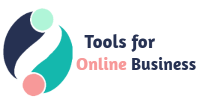At this stop, examples of digital information product format options are provided to help spark your creative thoughts.
You will also find resources that will cover each of the 5 main information product types.
Create products that are customer-centric and deliver them in a format best suited to your target audience.
Set Up For Digital Information Product Creation Success
We are now at the last stop of the identification phase of your digital information product creation journey.
You have identified your ideal customer and the niche you want to operate within. You have researched your market further as well as analysed your competition. On top of that, you have successfully identified your product solution. You will soon turn it into an amazing information product within the creation stage of our journey.
At this last stop of the identification stage, we will work through the abundance of options to select the type information product type and format. One that will work best for you and your audience.
Here you will
- review the information product types to identify the option best suited to your ideal customer
- review information product formats within each type. Kick-start your thoughts on which option you are able to create with success. As well as showcase your solution - product offering
- select the product format(s) to take into the next steps in the planning and product creation phases
Stage 3 - Investigate Your Digital Information Product Options
5 Main Types Utilised for Information Products
The 5 main types for information products are:
- Written
- Visual
- Audio
- Video
- Tools
Each of the above types has, wrongly or rightly, a perceived value with video and tools at the upper end of the value chain.
Written Information Products
Written information products are very popular. Text content is formatted along with images, to form a document. They are then often converted to a PDF format for easy download or viewing online
Documents may also be saved in their original form (eg Word, Pages) and uploaded to a platform such as Dropbox. An authorised person is then able to download the file for future viewing. Creating documents using Google Docs is also another alternative. These types of documents are commonly referred to as eBooks. However, they are not the same as the eBooks sold on Amazon.
Amazon eBooks have more sophisticated features and are more 'book' like. Published eBooks are usually created using special software. The software generates the content in a format that can be read by eReaders. Generally, the development process is more complex than simply saving the document as a PDF. Published eBooks are very doable, but the two shouldn't be confused.
Unique printable items are also popular. They support a task or need, accompanied by images or patterns to enhance the look and feel. There are whole marketplaces are set up specifically to sell these types of products (eg Etsy.com ).
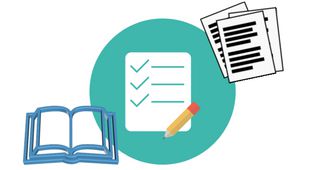

Written Information Product Format Examples:
- printable journal with writing prompts
- printable checklists
- reports
- ebooks
- guides
- scripts
Visual Information Products
Visual information products come in a variety of forms. Graphics can convey complex information simply. They are more powerful than the written word alone. Visuals make complex data more accessible, understandable, and usable.
When data is displayed within graphic images instead of grids of numbers, you are able to uncover patterns. As well as relationships that were not previously visible. This makes visually presented information a lot more valuable. Business dashboards that compare and contrast data provide a valuable 'at a glance' tool. These are widely used by business leaders to process information. They are able to gain insight in a fraction of time. Much easier and quicker than having to trawl through endless spreadsheets.
Exercise drawings and instructional drawings cover a wide range of industries. Topics such as physical therapy, personal training and yoga utilise instructional drawings.
Unique illustrations, drawings and other imagery are often sold on a license fee basis. The number of drawings and the use the purchaser has for the images determining the price. Image collections can be built up over time. Images could be sold as collections of cards. These could be combined to support a variety of uses. Common examples include physical therapy instructions or exercise routines to support personal training.
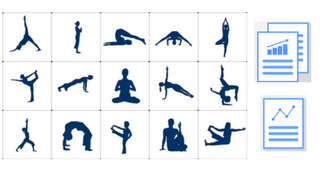

Visual Information Product Format Examples:
- infographics
- diagrams, illustrations
- animations
- slide share presentations
- charts
- printable planners / organisers
Audio Information Products
An audio information product is sound that is recorded and packaged as a product. These usually take the form of recorded dialogue. The dialogue conveys useful information or insight (eg Podcasts, speeches, interviews etc). They are relatively easy to create. But do require extra recording equipment to produce quality sound. As well as software to edit the recording.
You could either pre-record the audio or conduct live sessions where the audience gets to interact with you. You could then record the session for sale or promotion purposes later.
Audio products are popular for audiences that like to consume information on the run. Or to listen to while they are completing other tasks. I find them very useful. When I'm working around the house or out in the garden I often listen to recorded Podcasts. I know, sad but true.
As an added value, you can get the audio transcribed. You can then make it available as a download that accompanies the audio. That way the customer has the best of both worlds. Plus it provides the same information in another form that could be re-purposed into another information product. Bonus!


Audio Information Product Format Examples:
- podcasts
- live training sessions
- recorded tutorials
- guided tours
Video Information Products
Video information products are very popular. They combine both the visual and audio aspects of conveying information. Which covers the learning styles of most viewers. Video has a higher perceived value compared to written or audio products. In part, it is because of the skills needed to create them. Also, as humans, we process visual information a lot quicker than audio alone.
Online training courses utilise video successfully. They often combine video with other information product formats. For example workbooks, checklists and diagrams etc. These further enhance the audience's learning experience.
Creating video products requires specific equipment to record your voice clearly. As well as software to edit out any bloopers or add in additional images. You don't need to invest in high end recording equipment and lighting when you're starting off. Nor do you need a purpose-built recording studio.
There is now a range of low-cost equipment and software options available within the market today that will do a very good job. We are not looking to create the next blockbuster movie here. We just want to create good quality video and audio to convey your remarkable content.


The newer smartphones have reasonable video quality and are a good starting point. Recent releases of both Apple and Android smartphones are now able to produce a very good video. These devices have made the ability to create usable video a lot easier and cheaper.
The preparation, setup and post-production work is greater than creating visual or audio information products. They are more time consuming and do require a higher level of technical skill and perseverance. They also command a higher price point.
With the right toolset, good planning, along with a good deep breath beforehand. You will be able to create an amazing video information product. So don't be put off. The rewards are worth it.
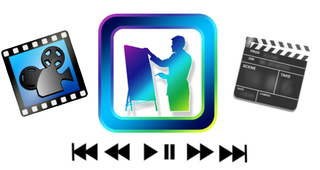

Video Information Product Format Examples:
- training sessions
- over-the-shoulder 'how to' recordings
- recorded interviews
- animated video clips
Tool Information Products
This category contains a range of technical tools and resources that have a variety of uses. There are many business scenarios that require tools to make complex or mundane tasks easier. Utilising these tools enables the organisation and the team member to become more efficient.
Templates created using office productivity tools such as Excel are also popular. Files that can be downloaded and then customised to fit the requirements of the purchaser are simple to create. People want to save time and are prepared to pay for a template already created. Rather than spend hours and hours trying to figure out how to create them. For a small investment, they can have quick ready access to a tool already set up for them. That's a bonus for you.
Trackers or calculators can come in a variety of forms such as a downloadable Excel spreadsheet or an app. These are useful as they can help the purchaser keep track of a variety of information. They often come with options to provide extra value by interpreting the data entered. Keeping track of information about fitness progress, savings progress, baby feeding routines are just some examples. The possibilities are endless.
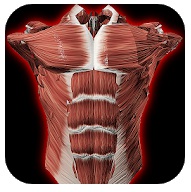





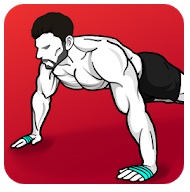

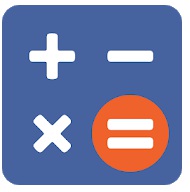

There are also apps that provide information on everything from education, human anatomy, cake decorating, to how to style long hair or how to sculpt your abs at home. Just take a look at the app stores and you can find a plethora of apps for just about anything. They could generate ideas for creating information products. Ideas that you may not have previously considered. Or even realised that there was customer demand.
Creating products using existing software that you already have on your PC is the easiest option. Creating apps will take a higher level of technical skill, funds and ongoing support. So this is not the ideal choice for your first product. Unless of course, you're already an app developer, then the world is your oyster.
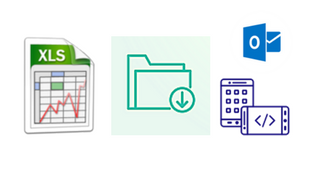

Tool Information Product Format Examples:
- information trackers
- templates
- 3D images with descriptions
- email swipe files
- calculators
- automated checklists


Evaluate And Select Your Digital Information Product Format
We have covered the top 5 types and some of the various information product formats used within each type. We have also presented you with a few examples to help generate ideas and get your creative juices going.
It is now time to evaluate which option(s) are best suited to your audience. You need to also consider your current level of skills and experience. You may decide to choose one format or combine several formats together to create your information product. While our focus here is creating stand-alone information products rather than online courses. You have the option to select a combination of various types and formats to create an online course. The choice is yours.
When selecting which type / format to create your information product in, consider each option in terms of impact, confidence and ease.
Here are some questions to prompt your thinking and help you unearth the best option for you -
Impact:
- How much revenue are you looking for vs effort required?
- Will this help the growth of your business in terms of promotion, building lasting relationships and trust?
- What is your audience looking for?
Confidence:
- How confident are you that the format is best suited to your target audience?
- How confident are you in your current level of skills to create a specific format?
Ease:
- How much time and effort will creating a product using this format take?
- Do you have the required resources needed to create your product in the format?
- Do you have access to training or information resources that will help you create the selected product format?
Once you have evaluated each of your options and considered the impact, confidence and ease of creation, it is decision time.
You have now made an informed choice - congratulations!
No matter which information product format you select. It is important to keep your goal 'top of mind'. To structure your information and communicate your knowledge in a way that will solve your customer's burning pain. Or provide them with some gain that will help bring about a transformation.
At our next stop our focus shifts from identification to planning and coordination.
Every successful product development starts off with a good plan and every plan needs to be based on a solid framework. So let's make sure that you set yourself up to succeed by setting up your planning framework.
